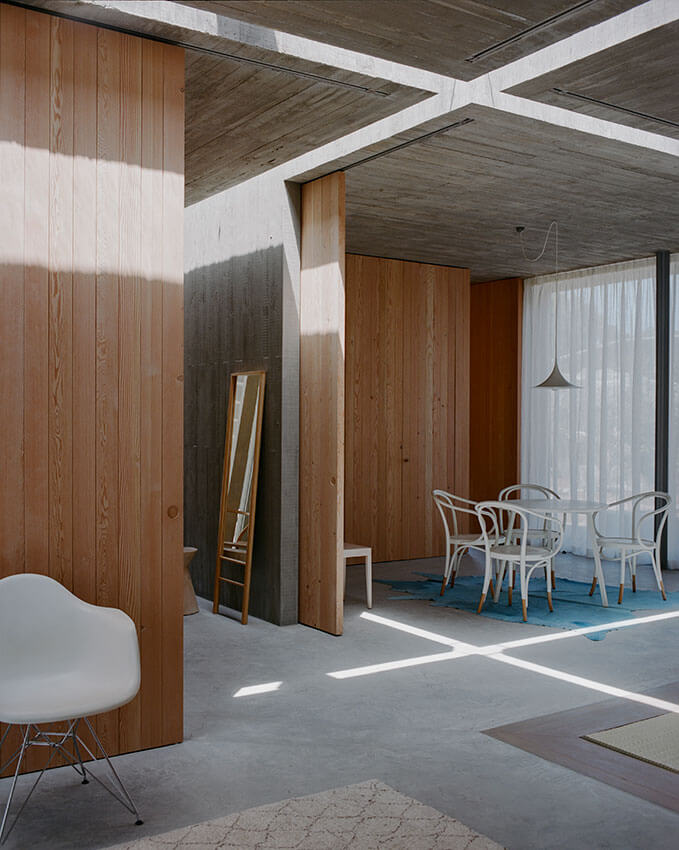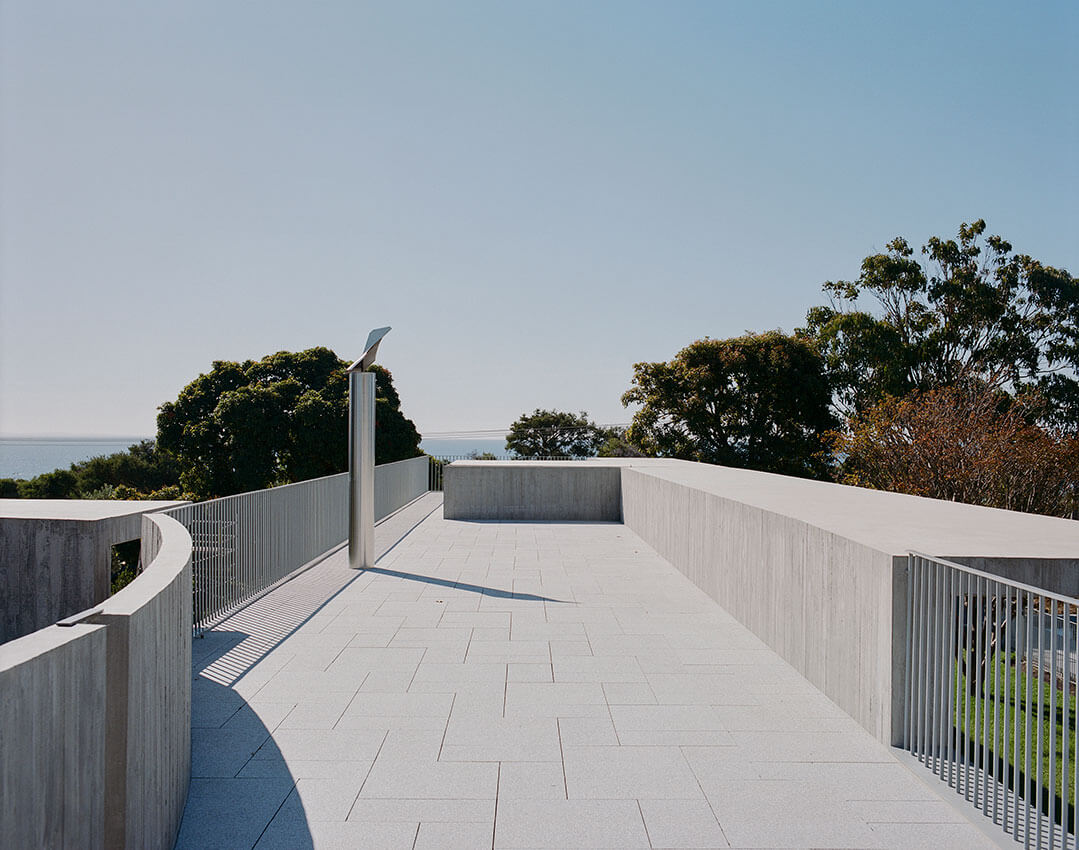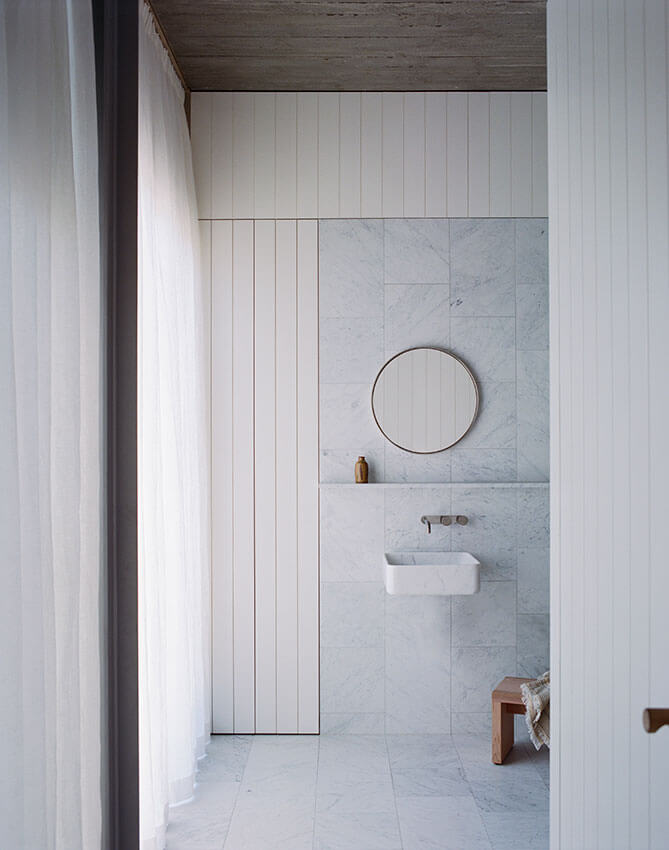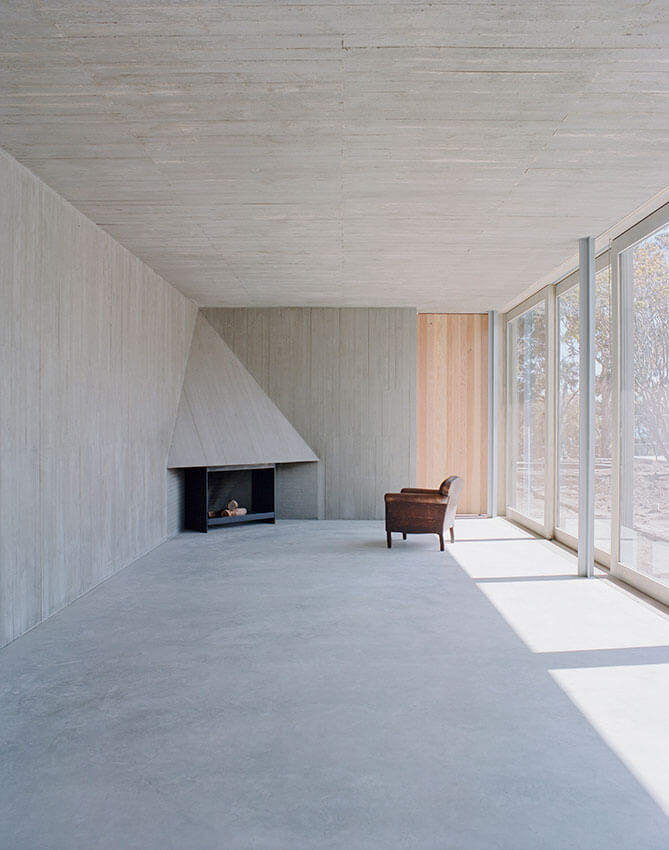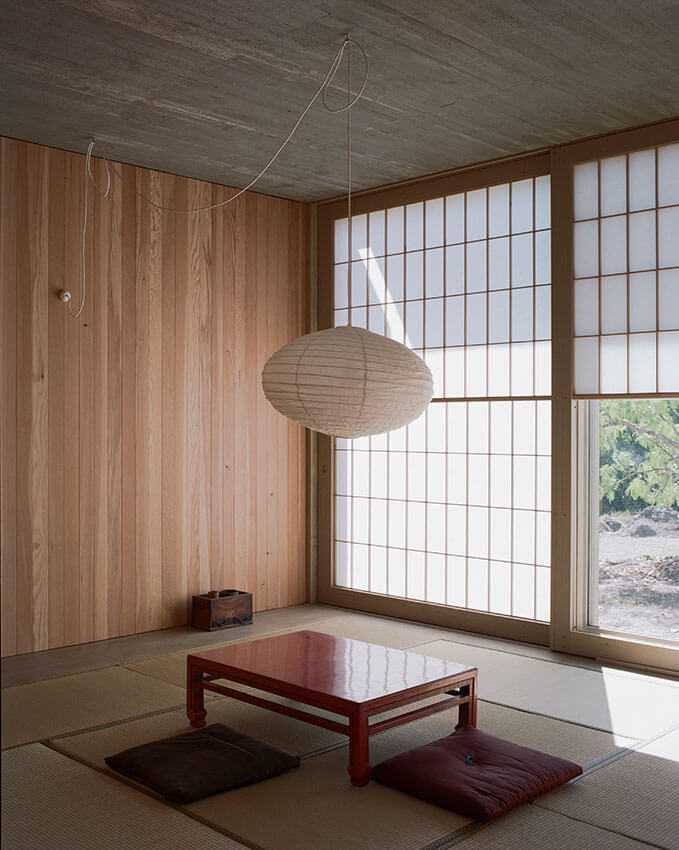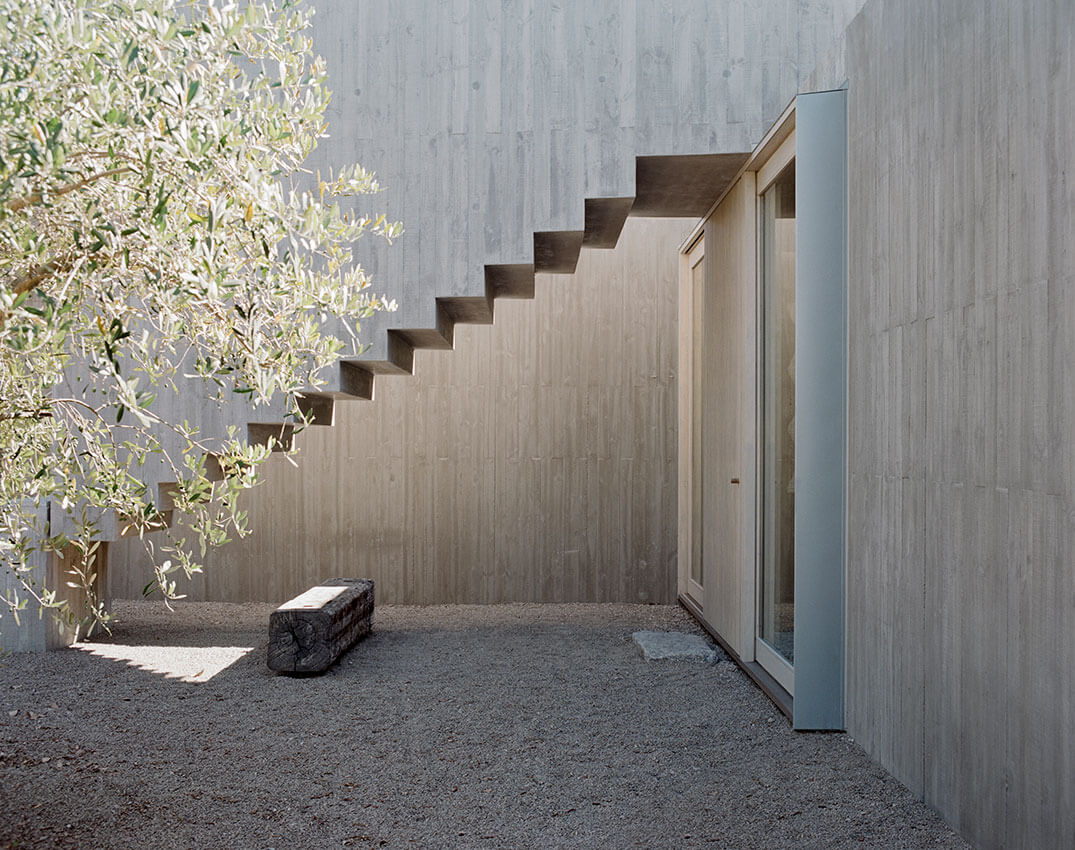Mori House | MAArchitects + Aires Mateus
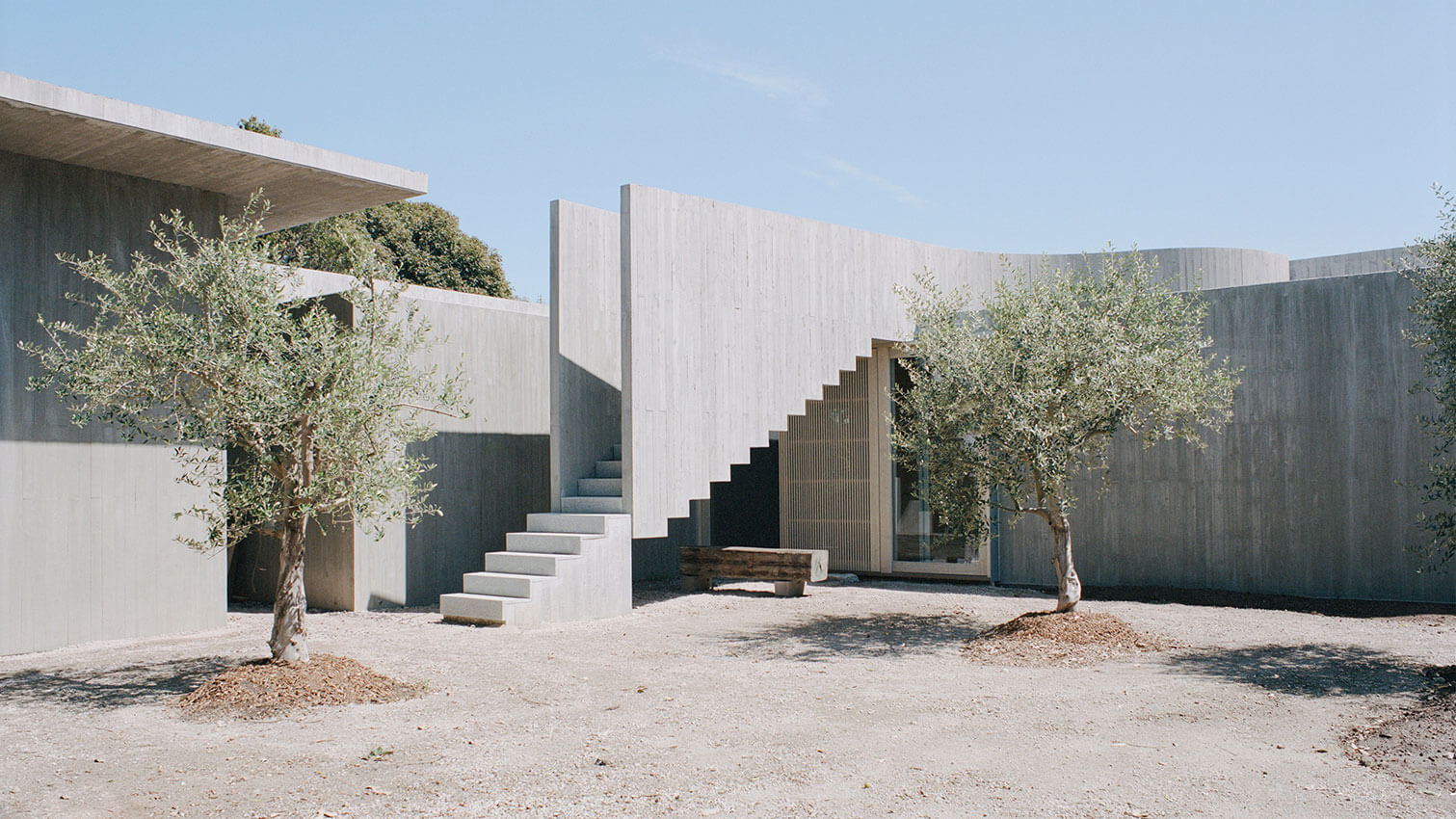
2023 National Architecture Awards Program
Mori House | MAArchitects + Aires Mateus
Traditional Land Owners
Bunurong
Year
Chapter
Victorian
Category
Residential Architecture – Houses (New)
The Dimity Reed Melbourne Prize (VIC)
Builder
Photographer
Media summary
Nestled in the landscape alongside Port Phillip Bay, this house was imagined as a concrete interpretation of a classic beach shack – a serene place for the clients and their multigenerational family to celebrate beach life. Internally, the house is divided into four areas delineated by a series of voids.
There is an array of sleeping spaces – several bedrooms, a bunkroom and a tatami room. The living spaces are varied in scale, to ensure the house is cosy for two, but equally comfortable when the full family is in situ. There is a ready flow from inside to out, via large openings and a series of carefully scaled patios.
At the entry, a striking stair rises up to the belvedere on the roof, gazing out over the tea-trees to the bay. Materially, the house eschews paint and plasterboard for off-form concrete and natural timber boards. This is architecture designed to endure.
2023
Victorian Architecture Awards Accolades
Shortlist – Residential Architecture – Houses (New)
Victorian Jury Citation
Mori House adeptly reinterprets the beach shack paradigm through a cross-cultural lens. A singular crucifix gesture divides the corner site into four distinct landscapes varied in function and privacy, with an added pair of satellite bungalows accommodating fluctuations of guests.
Fundamental passive principles are exploited to maximise daylight, crossflow breezes, and self-harvesting resources from a roof-terrace to view ocean and sky. Robust in its tectonic exactitude and material restraint, the muted concrete carapace serves as backdrop to the rich looseness in beachside occupation and multi-generational living.
Project Practice Team
José Maria Gonçalves Vieira (Aires Mateus), Coordinator
Junya Yokoyama (Aires Mateus), Collaborators
Karen Alcock (MAArchitects), Director
Manuel Aires Mateus (Aires Mateus), Overseas Design Architect
Rachael McNally (MAArchitects), Design Architect
Rita Gorjão Henriques (Aires Mateus), Collaborators
Sophie Davis (MAArchitects), Graduate of Architecture
Project Consultant and Construction Team
GIW Environmental Solutions, ESD Consultant
Myles Baldwin, Landscape Consultant
Nelson McDermott, Building Surveyor
Neometro, Construction Manager
R. Bliem & Associates, Engineer
Connect with MAArchitects + Aires Mateus
